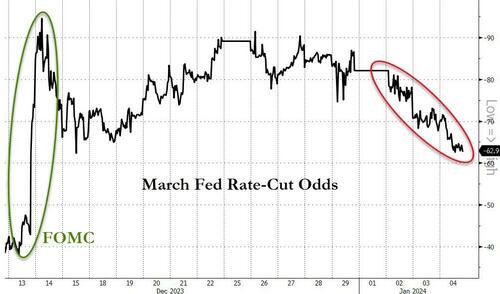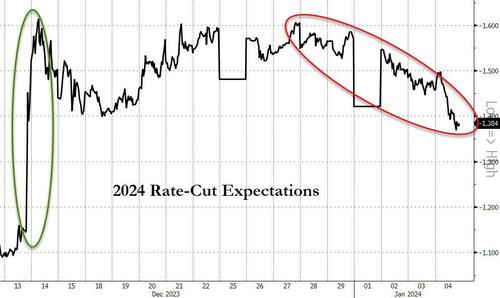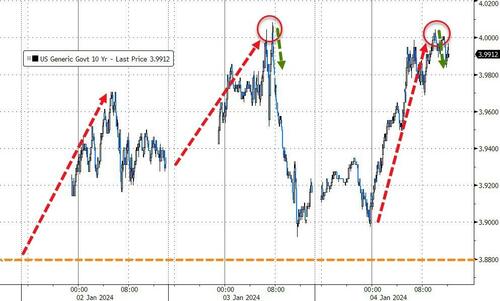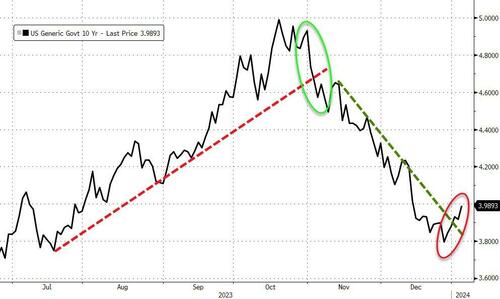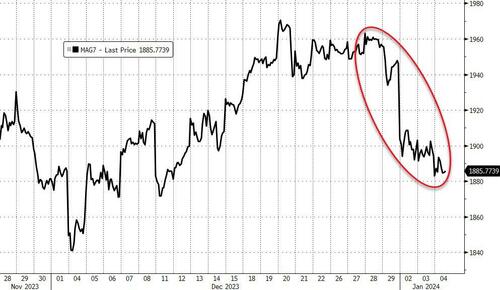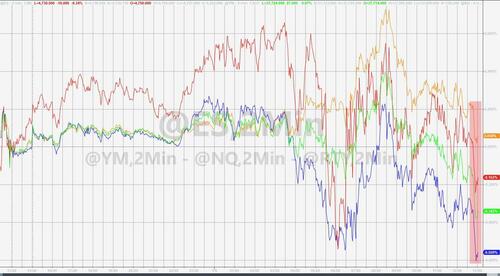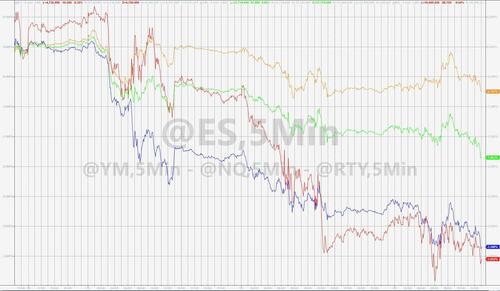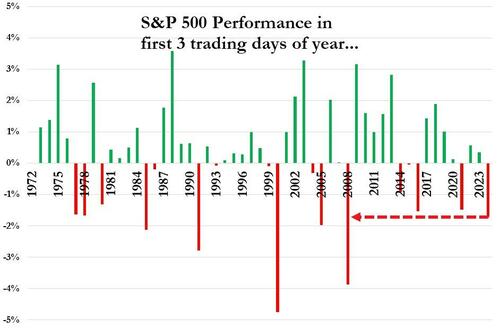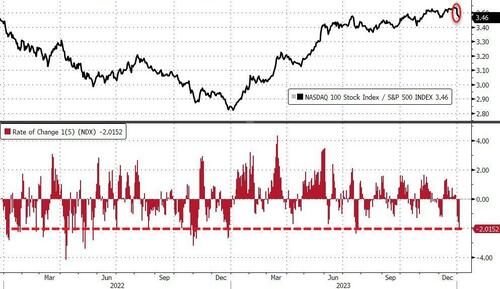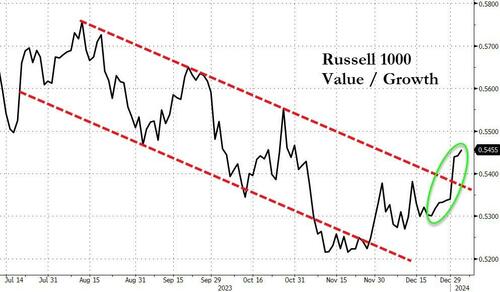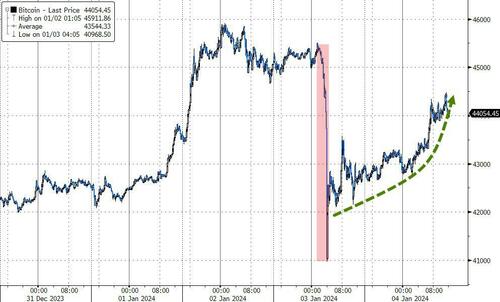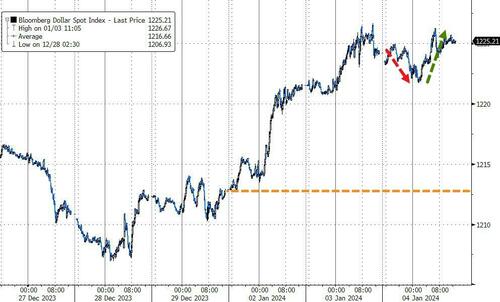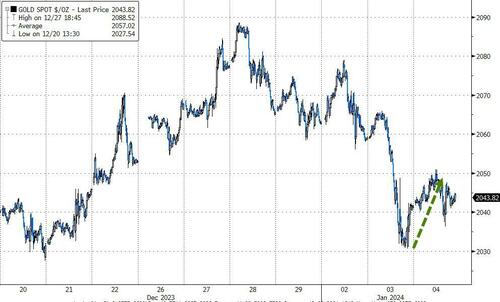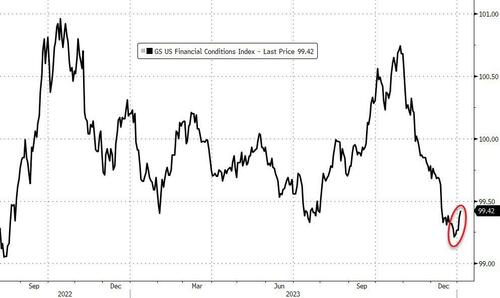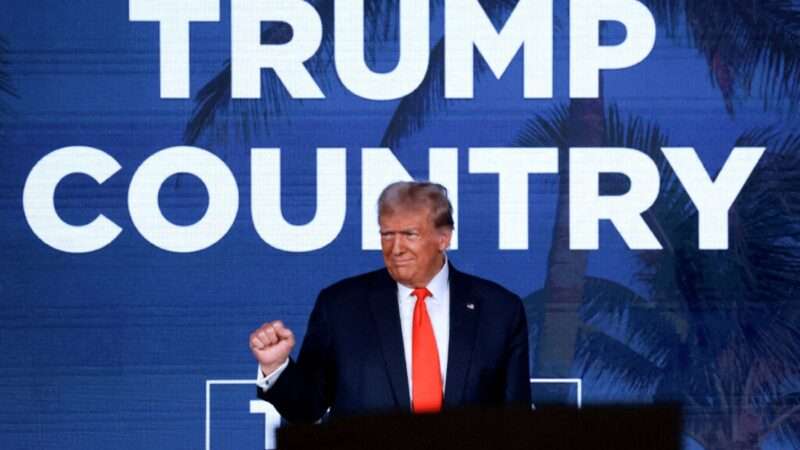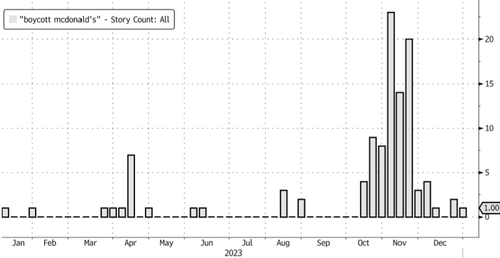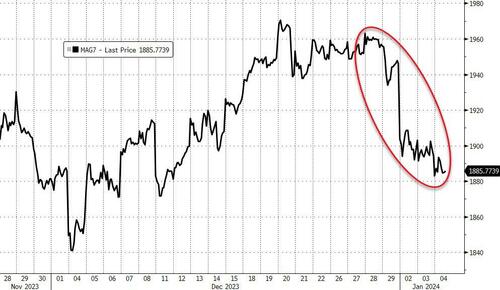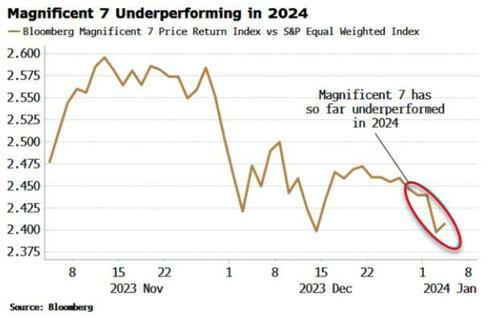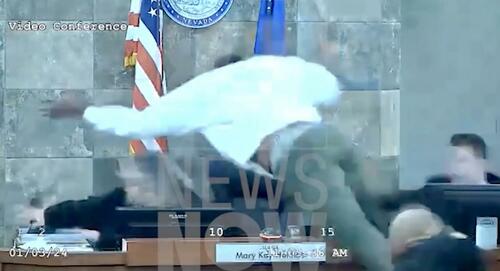[This post is co-authored with Seth Barrett Tillman]
Recently, James Heilpern and Michael T. Worley (the “Authors”) posted an article to SSRN titled Evidence that the President is an “Officer of the United States” for Purposes of Section 3 of the Fourteenth Amendment. The Authors conclude that our position is incorrect. Their Article cites an “undeniable urgency” to answer this question. As often happens in anticipation of, and during fast-paced litigation, people who have no prior expertise in an area profess an immediate expertise, and make bold conclusions with the intent of influencing that litigation. This may be one such paper. For reasons we discuss below, Justices and judges, lawyers, scholars, and the press should exercise caution before citing this paper.
First, the Authors conclude, based on a corpus linguistics search, that the phrase “Officers of the United States” is not a historical term of art. In a footnote, they write, “While Blackman and Tillman never make this assertion explicitly, it is implicit in their arguments.” Their claim, here, is more than odd. Why? Because we, in fact, expressly state the exact opposite. In Part III of our ten-part series, a copy of which we personally sent the Authors, we wrote:
We think the phrase “Officers of the United States” is defined by the Appointments Clause.51 The phrase “Officers of the United States” was not a fixed term of art.52 It did not draw on any specific prior drafting conventions. The Articles of Confederation used the phrase “office . . . under the United States” in two provisions, but it did not use the phrase “Officers of the United States.”53 A study of the Corpus of Founding Era American English (COFEA) supports our position.54 The phrase “Officers of the United States” had no apparent “specialized meaning attached to its use.“55 (Blackman & Tillman, Part III, at 365.)
And what do we (Blackman and Tillman) cite in Footnote 55 of our article? We cite the corpus linguistics amicus brief written by James Heilpern in Lucia v. SEC. We agreed with Heilpern that “Officers of the United States” is not a term of art! Yet somehow we are making the opposite argument implicitly?
There are two possibilities here. First, Heilpern and Worley took the view that we (Blackman and Tillman) somehow did not understand or had misrepresented our own position. But if that was their view, then they and their Article should have explained that to the reader, and they should support that position by pointing to where we have made that argument, if only implicitly. They do not do that or anything like that. The alternative view is that Heilpern and Worley have not read our recent scholarship and briefs on the subject, and they do not understand our position. And if that is the situation, then certain conclusions should follow.
Second, the Authors claim that:
In their latest article, Blackman and Tillman pick up an argument from the litigation. The argument begins with the premise that the President takes an oath to “preserve, protect, and defend” the Constitution, found in Article II, and does not take the oath to “support” the Constitution, found in Article VI. Because Section 3 refers to officers who have “previously taken an oath … to support the Constitution of the United States,” the President, the argument goes, has not taken such an oath and is not in the scope of Section 3. (Heilpern & Worley, at 23.)
Heilpern and Worlsey continue by suggesting that we have “rel[ied]” on the “support” argument. Id. at 24. The simple fact is that we did not originate this argument, and we have never adopted it. We merely explained that it was an argument that was recently advanced in still ongoing Section 3 litigation. This is what we wrote in our recent contribution to Section 3 scholarship:
There may be yet another reason to conclude that the President is not fairly encompassed by Article VI’s “Officers of the United States”-language. The presidential oath in Article II provides that the President “will to the best of my Ability, preserve, protect and defend the Constitution of the United States.” Article VI uses different language: a covered position “shall be bound by Oath or Affirmation, to support this Constitution.” Indeed, Section 3 uses very similar language: “to support the Constitution of the United States.”558 President Trump’s attorneys contended that this different language provides further support for the position that the President’s oath would not be covered by the oath provisions of Article VI and Section 3.559 (Blackman & Tillman, Sweeping and Forcing, at 542.)
Again, we accurately reported an argument recently made by lawyers representing Trump, and we reported that (that is, their) position with tentative language: “may be yet another reason.” We credit those lawyers (as we should) for making a novel and bold contribution to the literature. But they made that argument—not us (Blackman and Tillman). Again, the Authors criticize us for making an argument which we have never adopted.
Third, Heilpern and Worley continue their discussion of antebellum oaths and what Article VI’s “support” language meant circa 1788 and 1868. They state:
Evidence from the time of the 14th Amendment supports our view. Recall that Section 3 extended to any “person… who, having previously taken an oath, … as an executive or judicial officer of any State, to support the Constitution of the United States” and subsequently engaged in insurrection.123 Thus, no one doubts that executive officers in the Southern states—for example, South Carolina—who had taken an oath prior to the rebellion, were covered by Section 3.
But when you look at the oath South Carolina officers were required by [Article IV of] the South Carolina Constitution [of 1790] to take, the language mirrors the [U.S. Constitution’s Article II] Presidential Oath, not the [U.S. Constitution’s] Article VI Oath:
Every person who shall be chosen or appointed to any office of profit or trust; before entering on the execution thereof, shall take the following oath: “I do solemnly swear, (or affirm), that I will be faithful, and true allegiance bear to the State of South Carolina, so long as I may continue a citizen thereof; and that I am duly qualified, according to the constitution of this State, to exercise the office to which I have been appointed; and that I will, to the best of my abilities, discharge the duties thereof, and preserve, protect, and defend the constitution of this State, and of the United States: So help me God.124
Given no one doubts Section 3 was to apply to South Carolina rebels, it is clear that the drafters of the 14th Amendment viewed an oath to “preserve, protect, and defend” the United States Constitution as an oath to “support” the United States Constitution. Any other reading of Section 3 appears absurd to us. (Heilpern & Worley, at 23 (bold added).)
[fn123] U.S. Const. Amend. XIV, s 3.
[fn124] S.C. Const. of 1790, art. IV (emphasis added). This Article was written [?] in 1790 and was modified in 1834. Both versions of the oath have “preserve, protect, and defend”—and not “support.”
Now let’s try to unlock the Authors’ argument. Section 3 applied to South Carolina rebels. The Authors do not doubt that, and neither do we. Section 3 only applied to those South Carolina (and other) rebels who had held Article VI-listed triggering or jurisdictional positions, who then subsequently took the Article VI mandated oath, and then engaged in insurrection or rebellion, or gave aid or comfort to enemies of the United States. Many such Section 3 triggering positions were state positions—created under the aegis of the South Carolina Constitution or by state statute. According to the Authors, the oath in Article IV of the South Carolina Constitution of 1790 was the relevant oath, and that Article IV oath did not use “support”-language. So one and all must have believed, circa 1868, that this oath’s “preserve, protect, and defend”-language was sufficient to make rebels liable under Section 3. Right?
No. not really.
A little background helps. The Federal Convention met during 1787. Afterwards, eleven states ratified the Constitution over the course of 1787 through early 1788. As a result, the Constitution went into effect. See Article VII. Federal elections were held, and the First Congress met in March 1789. It took a few weeks to gather a quorum and to organize each house. Then the electoral votes were counted. The very first bill to be enacted was the Oaths Act of 1789. (We discuss this statute at some length in Part III of our ten-part series.) What was in that statute? Article VI only mandates that certain listed federal and state positions take an oath to “support” the Constitution. But Article VI does not mandate the specific words that compose the oath. That decision was left to Congress. Nor does Article VI specify what officials are authorized to swear in other office-holders, nor what procedures are to be followed, nor how official records of those oaths should be kept. All of those details were determined by Congress in the Oaths Act of 1789. Congress, not the Constitution, specified the words which would compose the Article VI-mandated oath, and that oath would be in effect until the Civil War. The Oaths Act of 1789 specifies the text of the oath. The Oaths Act, ch. 1, 1 Stat. 23, § 1 states:
That the oath or affirmation required by the sixth article of the Constitution of the United States, shall be administered in the form following of the oath or affirmation to support the Constitution of the United States, to be administered to the members of the Senate and to the members of the House of Representatives, to wit: “I, A. B. do solemnly swear or affirm (as the case may be) that I will support the Constitution of the United States.”
Section 3 of the Oaths Act of 1789 made that oath applicable to state positions. And the Act became law on June 1, 1789. Neither Article VI, nor the Oaths Act of 1789 gave States any power to rewrite the Article VI oath—even to expand upon it. And, in fact, the South Carolina Constitution was not implemented until circa June 3, 1790. So what happened between June 1789 and June 1790 in South Carolina? Simple, they took the Article VI oath as mandated by Congress. It was reported in the newspapers. See City Gazette (Charleston, South Carolina), Jan. 20, 1790, at 2. What happened after June 1790? After June 1790, when the new South Carolina Constitution went into effect, covered state positions began to take or, better, began also to take the Article IV oath established in the South Carolina Constitution. See State Gazette of South Carolina (Charleston), Mar. 21, 1791, at 4.
As a result, there are two possibilities. After June 1790, state officials in South Carolina exclusively took the Article IV state oath—that’s Heilpern and Worley’s position. But the other view—a view that those Authors do not even consider—is that after June 1790, state officials took both the oath specified by the federal Oaths Act of 1792 and the oath specified by Article IV of the S.C. Constitution.
The former view would be, in our opinion, a clear violation of federal law. It assumes that Article VI is self-executing by States, even after Congress has actively pre-empted the field prior to the State’s enacting an inconsistent statute. On the other hand, the latter view is consistent with both federal and state constitutional and statutory law. The only oddity here is that the state oath also demanded loyalty to the U.S. Constitution. But is that really so difficult to accept from a patriotic people after 1776, the War of Independence, and 1787? Perhaps, such dual oaths under state law were once widespread—Could we prevail upon Heilpern and Worley to do some research? We would add that it is conceivable that Heilpern and Worley are correct in making the assumption that after June 1790, the only oath taken by S.C. officials was the oath established by Article IV of the S.C. Constitution. We suggest that the only way to know if that was the regular conduct of the S.C. state government and state government officials, post-June 1790, would be to do detailed research in S.C. archives. It does not appear that Heilpern and Worley have done anything like this. And for that reason, at this juncture, at least, their argument cannot pass muster.
Our criticism here is not that Heilpern and Worley are wrong. Our criticism is much deeper: they do not understand the complex interplay of federal and state constitutional and statutory provisions which controlled oath-taking in South Carolina circa 1789 and 1790. And if they do not understand that … how can they usefully comment on the validity of the “support” argument and Section 3 in 1868?
The answer is that they can’t. Furthermore, their comment that views which contradict their own are “absurd” is hyperbole. Unfortunately, such hyperbole is becoming common in the Section 3 literature.
Fourth, the Authors write:
We likewise are unpersuaded by Blackman and Tillman’s reading of the Impeachment Clause.
The Impeachment Clause extends to the “President, Vice President, and all civil officers of the United States.” But it does not say “all other civil officers.” As a result, one can reasonably draw the conclusion that the President and Vice President are not “officers of the United States.” We agree with this interpretation, but this interpretation did not originate with us. It was the position put forward by Justice Story in 1833, in his celebrated Commentaries on the Constitution, and perhaps put forward by others before Story. It was a position cited by many people, frequently expressly relying on Story, throughout the 19th century. Finally, it is a position that is supported by the drafting history of the Impeachment Clause. The Authors only mention in a footnote that we cite Story for this proposition. But the Authors also do not report that Madison’s Notes from the federal convention are consistent with Story’s analysis. Madison’s Notes indicates that “other” was included in a preliminary draft of the Impeachment Clause, but it was later stripped out by a style committee. Indeed Madison’s Notes is not merely consistent with Story’s position; rather, Madison’s Notes confirms Story’s position. Story published in 1833, but Madison’s Notes were not publicly disseminated until the 1840s.
The point here is a very basic one. But it is one that has happened repeatedly in the sub-literature criticizing our position. Heilpern and Worley are presenting their paper as one disagreeing with points made by Blackman and Tillman. But, in fact, they are disagreeing with Madison and Story, and they are not willing to clarify this for the reader.
Fifth, the Authors refer at various junctures to the Postal Act of 1792:
- “Regardless, founding-era sources also refer to the President as an officer of the United States. This includes the Postal Act of 1792, which lists the President with officers of the United States.”
- “In addition, of the thirteen times the full phrase appears, one—a postal bill specifying which ‘officers of the United States’ should be granted a franking privilege—specifically listed both the President and Vice President as officers of the United States.80″ FN80: Act to Establish the Post Office of the United States, 5 Stat. 733.
- “at least one bill, the Postal Act, squarely identifies the President as an ‘officer of the United States.'” (emphasis added)
- “That understanding—shared by Chief Justice Marshall in his opinion in Maurice and by Congress in the Postal Act—continued at the time of the drafting and ratification of the Fourteenth Amendment.”
The Authors never actually provide a correct citation to the Postal Act of 1792; rather, they actually cite to an act from 1845, a matter which we’ll get to shortly.
The Postal Act of 1792 appears at 1 Stat. 232, 237 (PDF). Section 19 provides, in part:
That the following letters and packets, and no other, shall be received and conveyed by post, free of postage, under such restrictions, as are hereinafter provided; that is to say: All letters and packets to or from the President or Vice President of the United States, and all letters and packets, not exceeding two ounces in weight, to or from any member of the Senate or House of Representatives, the Secretary of the Senate or Clerk of the House of Representatives, during their actual attendance ina ny session of Congress, and twenty days after such session.
We have searched this statute, and see no reference to the phrase “Officers of the United States.” It merely established the President’s franking privilege. But what about that citation in Footnote 80 to 5 Stat. 733. Volume 5 of the Statutes at Large is from the 1840s. This particular statute was enacted not in 1792, but in 1845. It is titled, “An Act to reduce the rates of postage, to limit the use and correct the abuse of the franking privilege, and for the prevention of frauds on the revenues of the Post Office Department” (PDF).
Section 6 of the statute provides, in part:
That from and after the passage of this act, all officers of the Government of the United States, heretofore having the franking privilege, shall be authorized and required to keep and account of all postage charged to and payable by them, respectively …. (emphasis added)
And Section 23 provides:
That nothing in this act contained shall be construed to repeal the laws heretofore enacted, granting the franking privilege to the President of the United States when in office, and to all ex-Presidents, and to the widows of the former Presidents Madison and Harrison. (emphasis added)
Let’s summarize. The 1792 statute does not use the phrase “Officer[s] of the United States” which appears in the Constitution of 1788’s Appointments Clause and in Section 3 of the Fourteenth Amendment (ratified in 1868). Instead, Section 6 of the 1845 statute uses the phrase “officers of the Government of the United States” That precise latter phrase appears nowhere in the Constitution of the United States, albeit the Necessary and Proper (or Sweeping) Clause uses language very close to it. Article I, Section 8, Clause 18 provides for “Powers vested by this Constitution in the Government of the United States, or in any Department or Officer thereof.” The bottom line is that the two phrases—officers of the United States (used in the original Constitution and Section 3), and officers of the Government of the United States (used in the statute)—are textually distinct, and that, at the very least, raises an inference or a presumption that a different meaning was intended and understood. Indeed, we have already written that the phrase “Officers of the Government of the United States” extends to elected apex federal positions, including the President. See Blackman & Tillman, Part I, at 318.
Again, the Authors disregard what we actually wrote, and in the process, locate evidence that supports our position. The statute does not use “Officers of the United States.” It uses the broader phrase “Officers of the Government of the United States” and this more expansive language extends to the presidency and supports our position.
One more note on the Postal Act of 1792. Section 11 provides, in part, that if a “deputy postmaster, or other person authorized by the Postmaster General . . . shall fraudulently demand or receive any rate of postage . . . he shall forfeit for every such offence, one hundred dollars, and shall be rendered incapable of holding any office under the United States.” Congress can’t add to the qualifications of the presidency (or any other federal elected position) by statute. It would stand to reason that this statute, which uses the phrase “Office under the United States,” does not refer to the presidency. This statute is not an outlier. In Part IV of our series (520–524), we focused on a bribery statute enacted by the First Congress, which likewise disqualified a person from holding an “Office under the United States.” It follows that the better reading of this statute is that its “Office under the United States”-language excludes the President. The Postal Act of 1792 mentions the President and the phrase “Office under the United States.” The President cannot be an “Office under the United States” in this statute. The Postal Act of 1792 provides even further support for our position: that in the Constitution of 1788, “Office . . . under the United States” did not reach elected federal positions.
Still when all is said and done: we want to be fair to Heilpern and Worley’s scholarship. They have not pointed to even one statute showing that Congress used “officer of the United States” to include the President. But we are willing to stipulate, or better, we suspect that there are such statutes—perhaps, more than a few. Our response to that is simply: So what! Over the many years between 1788 and 1868, many, many statutes were passed. One should not expect perfect consistency in regard to legal usage from different draftspersons across different decades and centuries. When Congress, in a statute, uses a phrase in the Constitution, it raises a presumption that Congress is using the terminology in the same fashion. But it is just a presumption. In interpreting a statute, the goal is to determine the meaning of the statute (or to use the older terminology—the intent of Congress), not the meaning of the Constitution. Congress is always free to depart from traditional constitutional usage. Sometimes Congress might depart from the constitutional usage intentionally, and at other times, it may do so inadvertently. The latter is likely to happen during a war or other emergency which affects the work product of those charged with drafting statutes in the regular course of business. And during such times, trained staff can be difficult to retain and find. Visit the Capitol, where you can see plaques of members and staff who died in our wars.
In any event, such departures from traditional constitutional usage do not determine what the Constitution means. Our position is that the meaning of “Officers of the United States” was determined, defined, or fixed by the Appointments Clause. The authors endeavor to show that the word “appoint” and “elect” had a similar meaning when the Constitution was ratified, but our position never relies on some abstract sense of “appointment,” but instead turns on the precise mechanisms provided for in Article II, Section 2, including the Appointments Clause. In short, “officers of the United States” extends to appointed positions in the Judicial Branch and in the Executive Branch, and not to elected federal positions. This is what the Appointments Clause says, and this is what any number of courts have affirmed.
Heilpern and Worley also take issue with some more prominent jurists. They cite Chief Justice Marshall’s decision in U.S. v. Maurice, but do not quote what Marshall said about the phrase “Officer of the United States.” Marshall limited the construction of the phrase “officer of the United States” to “an individual [who] is appointed by government.”
What about Justice Miller’s decision in U.S. v. Mouat? He wrote, “Unless a person in the service of the government, therefore, holds his place by virtue of an appointment by the President or of one of the courts of justice or heads of departments authorized by law to make such an appointment, he is not, strictly speaking, an officer of the United States.” How do Heilpern and Worley respond? They write that Justice Samuel Miller was “simply wrong.” Miller served on the Supreme Court for about three decades, and we have not found any statement ever before suggesting Miller and the Supreme Court erred in Mouat. To the contrary, his statement has been cited many, many times over the last 130 years.
What about Chief Justice Roberts’ statement in Free Enterprise Fund. Roberts wrote “[t]he people do not vote for the ‘Officers of the United States.'” Heilpern and Worley suggest that Roberts may be wrong, at least with regard to the President not being an “Officer of the United States.” They write “However, even if the Chief [Justice] is right, that would only strike Members of the House of Representatives from our list in Table I. After all, the people do not actually vote for the President of the United States—the electoral college does.” Chief Justice Roberts would disagree. In Free Enterprise Fund, the Chief Justice stated that the President was elected:
No one doubts Congress’s power to create a vast and varied federal bureaucracy. But where, in all this, is the role for oversight by an elected President? (emphasis added)
Roberts has repeated this point throughout his tenure. In Seila Law v. CFPB, Roberts stated expressly that the President is elected through elections:
The resulting constitutional strategy is straightforward: divide power everywhere except for the Presidency, and render the President directly accountable to the people through regular elections. In that scheme, individual executive officials will still wield significant authority, but that authority remains subject to the ongoing supervision and control of the elected President. (emphases added)
In Trump v. Vance, Chief Justice Roberts cited Chief Justice Marshall in United States v. Burr for the proposition that the President is elected:
Chief Justice Marshall pre-emptively rejected any notion of absolute immunity, despite the fact that the Government did not so much as suggest it in court. He distinguished the President from the British monarch, who did have immunity, calling it an “essentia[l] … difference” in our system that the President “is elected from the mass of the people, and, on the expiration of the time for which he is elected, returns to the mass of the people again.” (emphasis added)
Heilpern and Worley do not cite Seila Law, or Vance, or Burr, or anything else that might bear on Chief Justice Roberts’ views.
And of course, Justice Story, in his celebrated Commentaries on the Constitution, is barely mentioned in a footnote. We get it. Anyone, including any number of Supreme Court Justices, who disagrees with these two authors, who have never published on this topic before, must be entirely wrong or not worth mentioning—makes complete sense. As for us, Blackman and Tillman, we are glad to be in the company of Marshall, Story, Miller, and Roberts.
Finally, there is one passage in the new paper that warrants mention. It appears only towards the end:
As noted above, we looked to the legislative history of the Fourteenth Amendment not to determine the intended meaning of the Fourteenth Amendment, but to look for evidence of how the legislators used the phrase “officer of the United States” and its synonyms in the course of their duties. Unfortunately, we did not find any explicit references to the President (or Vice President) as an “officer of the United States.” We suspect that Blackman and Tillman would argue that this proves their point.
We appreciate their having candidly reported their findings on this issue. We are loath to draw any clear inferences from their claim (based wholly on the absence of express statements) until we have done our own complete research encompassing all congressional and ratification debates. That research—by us and others—remains ongoing. It will be the efforts of years, not days, weeks, or even a few months. What we can say here—today—is that we and others have uncovered and reported records from public debate and scholarship in the 1870s, in the 1860s, and even during the relatively short period in which the Fourteenth Amendment was ratified that expressly stated:
[i] that the scope of Article VI’s Oaths Clause is “precisely” the same as the list of triggering or jurisdictional positions in Section 3 of the Fourteenth Amendment; and,
[ii] that the President of the United States is not an “officer of the United States” as that phrase is used in the Constitution.
In response to these findings, we have yet to see any clear response, or, indeed, any response, from Professors Baude and Paulsen, from Heilpern and Worley—or from other regular participants in this ongoing debate. And that is a tell.
***
We have been somewhat reluctant to have spent as much time as we have on this paper. But we understand the dynamics. This paper was written quickly, and posted online in haste in order to influence litigation that is now before the United States Supreme Court and many other federal and state courts. We get it. And we have no doubts that scholars and lawyers may look to cite Heilpern and Worley’s Article and their positions in short order, perhaps without fully vetting this new scholarship. We offer this blog post as something of a caution.
Towards the end of Sweeping and Posting, we offered this admonition:
What about Baude and Paulsen’s article? The theoretical defects and other errors are not insubstantial and span multiple independent issues. We see no sound basis for their Article’s startling conclusion: “In the end, essentially all the evidence concerning the original textual meaning of Section Three . . . points in the same direction . . . .” Indeed, we cannot remember having seen such a conclusion in any academic publication before—at least, none comes readily to mind. We cannot remember having seen an academic article repeatedly making hyperbolic claims—at least, none comes readily to mind. Baude and Paulsen’s article tells only one side of a complex story, and it does not fully respond to (and sometimes fails to see) contrary evidence. Their article is now a draft posted on the Social Science Research Network. We suggest that scholars, litigants, elections administrators, and judges allow their article to percolate in the literature before placing too great a reliance on its novel claims.
We offer the same admonition—squared—with regard to Heilpern and Worley’s Article. Whether their Article should be patched-up is a matter for its Authors. We think the errors we have discussed in this blog post are significant ones—and some obviously so. We could add further comments and report further errors along the lines we have discussed above. But quite frankly at this particular juncture, when we are writing amicus briefs, including one for the United States Supreme Court due quite literally in the next two or three business days, and responding to press inquiries, along with our regular academic duties, we do not have more time to devote to their Article. Over the course of the last 15 years, we have been gratified to see our intellectual opponents amend, modify, or, sometimes, retract their positions in response to our critique(s). (Something which we too have done … at least … at the margins.) And even where agreement remains absent, the literature has generally improved over time.
This is not one of those times.
The post A New, Rushed, Flawed Article In The Section 3 Debate appeared first on Reason.com.
from Latest https://ift.tt/5sydhuR
via IFTTT


